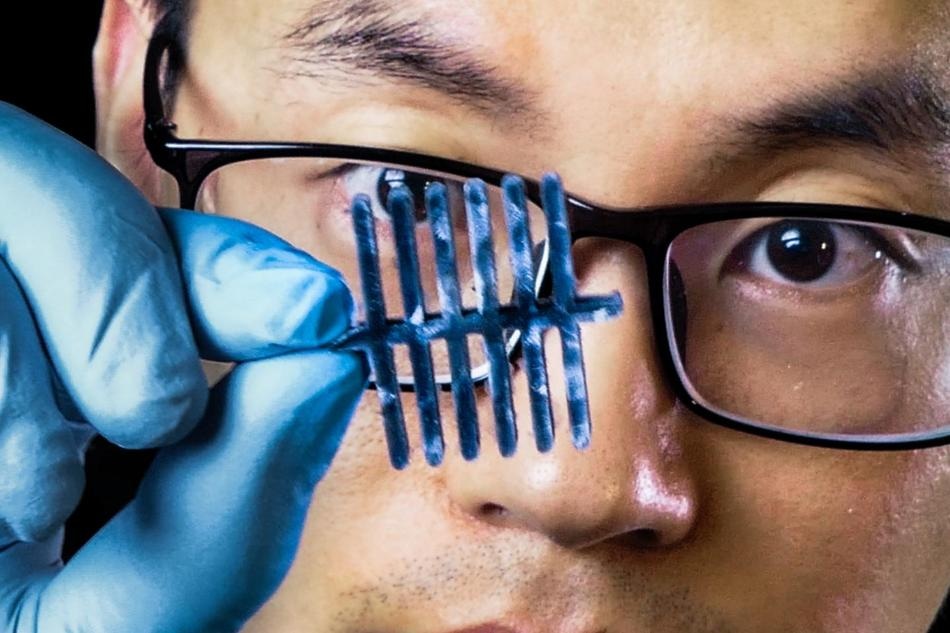Mar 26 2019
Cellulose soaked in a precisely developed polymer mixture serves as a sensor to simultaneously measure temperature, pressure, and humidity. The measurements are absolutely independent of each other. The sensor may be extremely important in fields such as security, healthcare, and robotics.
 Shaobo Han with the sensor that can measure pressure, temperature, and humidity—at the same time. (Image credit: Linköping University)
Shaobo Han with the sensor that can measure pressure, temperature, and humidity—at the same time. (Image credit: Linköping University)
The potential to measure temperature, pressure, and humidity is crucial in several applications; a few examples include robotics, monitoring patients at home, functional textiles, electronic skin, surveillance, and security. Study so far has aimed at incorporating the different sensors into the same circuit, and this has posed many technical issues, mainly regarding the interface to the user.
Researchers in the Laboratory of Organic Electronics at Linköping University, under the guidance of Professor Xavier Crispin, have now successfully integrated all three measurements into one sensor.
Aerogel
This has been enabled by the development of an elastic aerogel of polymers that conducts ions as well as electrons, and following utilization of the thermoelectric effect. A thermoelectric material is one in which electrons go from the cold side of the material toward the warm side, and in this manner, a voltage difference can be created.
On combining nanofibers of cellulose with the conducting polymer PEDOT:PSS in water and freeze-drying the mixture under vacuum, the resultant material has the structure similar to a washing sponge, an aerogel. The sponge is made elastic by including a substance called polysilane. Application of an electrical potential across the material results in a linear current increase, characteristic of any resistor. However, when the material is subject to pressure, its resistance decreases and electrons flow more readily through it.
As the material is thermoelectric, the temperature variations can be measured: as the temperature difference between the warm and cold sides becomes larger, the voltage developed is higher. The humidity influences the rate at which the ions transfer from the warm side to the cold side. If the humidity is zero, there is no transportation of ions.
What is new is that we can distinguish between the thermoelectric response of the electrons (giving the temperature gradient) and that of the ions (giving the humidity level) by following the electrical signal versus time. That is because the two responses occur at different speeds. This means that we can measure three parameters with one material, without the different measurements being coupled.
Xavier Crispin, Professor, Laboratory of Organic Electronics, Linköping University.
Xavier Crispin is also the principal author of the article reported in Advanced Science.
A Lot of Possible Applications
Shaobo Han, doctoral student, and Senior Lecturer Simone Fabiano at the Laboratory of Organic Electronics have also discovered a method to separate the three signals from each other, such that each can be easily read independently.
Our unique sensor also prepares the way for the internet of things, and brings lower complexity and lower production costs. This is an advantage not least in the security industry. A further possible application is placing sensors into packages with sensitive goods.
Simone Fabiano, Laboratory of Organic Electronics, Linköping University.
The study was funded by the Knut and Alice Wallenberg Foundation (the Tail of the Sun project), the Wallenberg Wood Science Center, the Vinnova Digital Cellulose Center, and the government’s strategic investment into advanced functional materials at Linköping University, AFM.